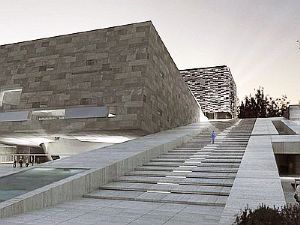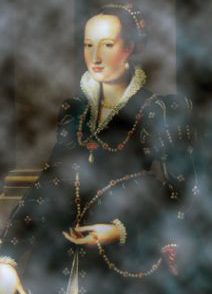It is no secret that Piazzale Michelangelo provides some of the best views of Florence. A better kept secret, however, is Giardino delle Rose, the rose garden that lies just below the north side of Piazzale Michelangelo on the San Miniato hill. Designed in 1865 by Giuseppe Poggi, this garden provides a quiet and tranquil atmosphere not commonly found throughout the rest of the city. Visitors casually laze about the garden, soaking up the sun on benches, lying in the shade near bubbling fountains, or reading on the grassy lawns. Since September 30, visitors have also been enjoying the sculptures of Jean-Michel Folon, a Belgian artist who fell in love with Italy and dreamed of gifting Florence with his artwork as a token of his affection.
Folon was born on March 1, 1934, in Uccle, Belgium. He briefly studied architecture at the Ecole Nationale Supérieure des Arts Visuels of La Cambre, a renowned school of visual arts and architecture in Brussels. However, he gave up his studies and moved to Paris in 1955. During this time, Folon began drawing every day. He also spent a significant amount of time traveling throughout Europe.
Although he first devoted his life to art in Paris, it was in the United States that Folon initially achieved some measure of success. After failing to garner attention from French critics and publishers, in 1960, Folon sent his drawings to several magazines based in New York. Without ever meeting with the publishers-or even stepping foot on United States soil-Folon found his drawings published in Horizon, Esquire, and the New Yorker. Folon’s career began to take off. He was published in American magazines and newspapers, including Fortune and Time, and over the next few decades, his work was featured in numerous exhibitions in such major U.S. cities as New York and Chicago.
Now Folon’s work also began to receive great recognition throughout Europe, including Italy. In 1967, Italian author Giorgio Soavi recruited him to illustrate his book Le message, the beginning of Folon’s career as an illustrator. His first Italian exhibition took place three years later in Milan at the Galleria del Milione, and he continued to hold exhibitions in major Italian cities throughout the remainder of his career.
As his career evolved, so too did Folon’s work. He no longer limited his artistic expression to drawings only, expanding his efforts to watercolors, etchings, murals, collages, and even animated films. In 1986, he began to experiment with sculpture, initially using the medium of wood but later progressing to materials such as clay and bronze. In May 2005, Folon displayed over 250 of these sculptures and other works in his exhibition Folon Firenze at Fort Belvedere in Florence.
In a 2005 interview with Marilena Pasquali of Hortus Musicus, a quarterly magazine on politics and culture, Folon expressed his views about the dynamic energy of sculptures. He strongly believed that sculptures are not independent of the environment in which they are displayed. Rather, they interact with their surroundings in what he refers to as a ‘dialogue.’ For this reason, he was extremely choosy about the ways his pieces were displayed; everything had to be in a precise location during his exhibitions, sometimes requiring hours of rearranging.
It is also because of this dialogue that Folon wished his pieces would ultimately remain in Tuscany, a region with which he fell in love. He dreamed of displaying them in the perfect garden with good lighting and a spectacular view. This way, his sculptures could enter a conversation with Italy-its sun and its rain, and in all all of its seasons.
Folon died on October 20, 2005, shortly after his exhibition in Florence closed. However, his wife Paola Ghiringhelli Folon knew of his dream for his sculptures. She therefore bequeathed to the city of Florence ten of his bronze works and two works in plaster, which were to be placed in a quiet garden, according to his wishes.
The city chose the Giardino delle Rose to house the sculptures. After its renovation and redesign, the Giardino delle Rose was re-opened on September 30, 2011, with its newest additions.
The placement and inclusion of the ten sculptures highlight and enhance the natural beauty of the garden, which overlooks the heart of the city. For example, Folon’s 2002 sculpture entitled Partir portrays the image of a suitcase with no front or back. Inside the suitcase, a ship sails on the sea with the red roofs of Florence as its stunning background. Another sculpture is the 1996 Chat, the image of a giant slumbering cat curled up on the grassy slopes of the garden. Even the playful side of Florence is expressed through the 2002 sculpture entitled Vivre, in which a prancing animal squirts water into a small fountain.
So that Folon’s contributions may be enjoyed in any season, the Giardino delle Rose will now remain open year-round. An informational video about Folon and his work plays in one corner of the space throughout the day until the end of October. Admission to the Giardino delle Rose remains free.
Giardino delle Rose
Viale Giuseppe Poggi 2
Open year round, 9am to sunset






